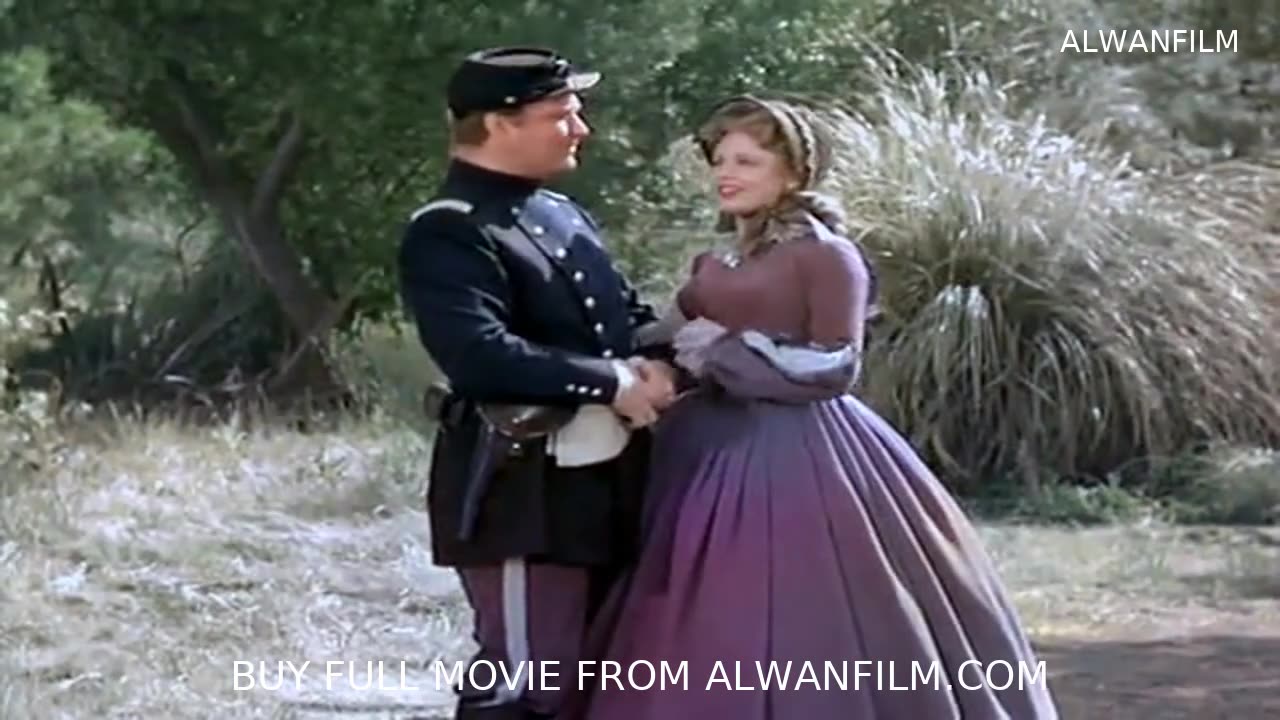Premium Only Content

A Southern Yankee Colorized
A Southern Yankee Colorized
Review: A Southern Yankee 1948 Colorized - Exploring the Impact of Early Colorization
Introduction
In the annals of film history, few comedies retain the charm and wit of "A Southern Yankee," a 1948 classic that showcases the brilliance of slapstick humor and keen satire. Directed by Edward Sedgwick and starring the inimitable Red Skelton, the film stands out for its blend of comedy and historical parody. With the recent release of an early colored version, "A Southern Yankee" has sparked renewed interest and debate among movie aficionados. In this article, we will explore the significance of the film's colorized version, examining how it impacts the viewing experience and its place in the broader context of film history.
Check The Full Colorized Movies List
Check Our YouTube Channel
Check Our Colorized Movies Trailer Channel
Understanding A Southern Yankee 1948 Colorized: Director, Cast, and Genre
"A Southern Yankee" is a prime example of post-war American comedy, blending slapstick with a touch of historical satire. Directed by Edward Sedgwick, who is known for his work with comedic legends like Buster Keaton, the film features Red Skelton in one of his most memorable roles. Skelton's portrayal of Aubrey Filmore, a bumbling but well-meaning bellboy who becomes embroiled in Civil War espionage, is a masterclass in physical comedy and timing.
The supporting cast includes Brian Donlevy as Major Jack Drumman and Arlene Dahl as Sallyann Weatharby, both of whom provide strong performances that balance Skelton's comedic antics. The film's genre is firmly rooted in comedy, but it also incorporates elements of historical parody and romantic entanglements, making it a multifaceted piece that appeals to a wide audience.
Exploring the World of A Southern Yankee 1948 Colorized: Plot and Characters
"A Southern Yankee" takes place during the American Civil War, centering on the misadventures of Aubrey Filmore, a Northern bellboy who accidentally becomes a spy for both the Union and the Confederacy. The plot is a series of comedic escapades as Filmore, known as the "gray spider," navigates a world of double agents and mistaken identities.
The storyline is rich with humorous set-pieces, including Filmore's numerous close calls and his inadvertent success in espionage. One of the film's key moments is when Filmore, disguised as a Confederate officer, stumbles upon a crucial military secret. His bumbling yet fortuitous actions lead to a series of comedic and action-packed sequences, culminating in a chaotic yet satisfying resolution.
The characters are vividly drawn, with Filmore at the center as the well-meaning but inept protagonist. His interactions with Major Drumman and Sallyann Weatharby add layers of romance and intrigue, while also providing a counterpoint to his slapstick escapades. The film cleverly uses these characters to weave a narrative that is both humorous and engaging.
The Art of Film Colorization
Film colorization, the process of adding color to black-and-white footage, has always been a topic of intense debate. While some argue that it revitalizes classic films for new audiences, others believe it can compromise the original artistic vision. The process involves meticulously painting each frame, often requiring advanced technology and a deep understanding of the film’s aesthetic and narrative.
Colorization can bring a new dimension to classic films, making them more accessible to contemporary audiences who may be less inclined to watch black-and-white movies. However, it is essential to approach this process with respect for the original work, ensuring that the color palette enhances rather than detracts from the film's visual and thematic integrity.
Early Colored Films: A Brief History
The advent of early color techniques in cinema marked a significant evolution in the medium, allowing filmmakers to explore new artistic possibilities. From hand-tinted silent films to the groundbreaking Technicolor process, the history of film colorization is a testament to the industry's relentless pursuit of innovation.
Early color films often employed labor-intensive methods, such as manually painting each frame. This practice evolved into more sophisticated techniques, including the use of color filters and dye-transfer processes. The development of Technicolor in the 1930s revolutionized the industry, providing a vibrant and reliable color process that became a standard for decades.
A Southern Yankee 1948 and Its Early Colored Version
The decision to release "A Southern Yankee" in a colorized format offers a fresh perspective on this comedic gem. While the original black-and-white version possesses a certain timeless charm, the colorized version highlights details that might have gone unnoticed. For instance, the vibrant costumes and set designs come to life, adding a new layer of visual appeal.
Colorization can also affect the film’s comedic elements. The added vibrancy may enhance the visual gags and slapstick humor, making the film more engaging for modern viewers. However, it also raises questions about fidelity to the original artistic intent and whether the added color alters the film's nostalgic quality.
The Debate Over Film Colorization
As with any artistic reinterpretation, the colorization of classic films sparks a variety of opinions. Purists argue that black-and-white films should be preserved in their original format to maintain historical and artistic integrity. They believe that colorization can obscure the director's original vision and alter the film's mood and atmosphere.
Conversely, advocates for colorization contend that it can make classic films more accessible and enjoyable for contemporary audiences, particularly younger viewers who may be less familiar with black-and-white cinema. They argue that colorization, when done respectfully, can breathe new life into these films, ensuring their continued relevance in a changing media landscape.
Examining A Southern Yankee 1948 as an Early Colored Film
Viewing "A Southern Yankee" in its early colored incarnation provides a unique lens through which to appreciate the film. The added color can enhance the comedic timing and visual gags, making the physical humor more dynamic. Scenes such as Filmore's mishaps and mistaken identities are given new vibrancy, potentially amplifying their comedic impact.
However, it is also essential to consider how colorization might influence the film's thematic elements. The original black-and-white format often evokes a sense of nostalgia and historical authenticity, which can be altered by the addition of color. The challenge lies in balancing the visual enhancement with respect for the film's original aesthetic and narrative integrity.
Influence and Legacy: A Southern Yankee 1948 Colorized's Impact on Cinema
Beyond its immediate comedic appeal, "A Southern Yankee" has left a lasting mark on the comedy genre. The film's blend of slapstick humor, historical parody, and romance has influenced subsequent generations of filmmakers. Its success demonstrates the enduring appeal of well-crafted comedy, transcending cultural and temporal boundaries.
Red Skelton's performance, in particular, has been widely praised for its physicality and timing, serving as a blueprint for future comedic actors. The film's clever use of mistaken identities and espionage elements has inspired countless other comedies, highlighting its enduring influence on the genre.
Director's Cinematic Legacy: Beyond A Southern Yankee 1948 Colorized
Edward Sedgwick's directorial career extends beyond "A Southern Yankee," encompassing a wide range of films that showcase his versatility and comedic sensibility. Sedgwick's work with comedic legends like Buster Keaton and Red Skelton cemented his reputation as a master of the genre, adept at blending physical comedy with narrative ingenuity.
Sedgwick's films often feature a keen understanding of timing and pacing, essential elements in crafting effective comedy. His ability to elicit strong performances from his actors and create memorable comedic set-pieces has left an indelible mark on the comedy genre, influencing directors and writers for decades.
Themes Explored in A Southern Yankee 1948 Colorized
"A Southern Yankee" explores themes of mistaken identity, patriotism, and the absurdity of war, all through the lens of comedy. The film uses humor to comment on the often chaotic and contradictory nature of human conflict, highlighting the absurdities of espionage and military life.
The character of Aubrey Filmore embodies the everyman thrust into extraordinary circumstances, navigating a world of intrigue and danger with a mix of naivety and resourcefulness. His journey reflects broader themes of individual agency and the power of humor to subvert and critique societal norms.
Reception and Controversy Surrounding A Southern Yankee 1948 Colorized
Upon its release, "A Southern Yankee" received positive reviews for its humor, performances, and clever script. Critics praised Skelton's comedic talents and the film's engaging blend of slapstick and satire. However, the recent colorized version has sparked mixed reactions, with some viewers appreciating the visual enhancement and others preferring the original black-and-white aesthetic.
The controversy surrounding the colorization reflects broader debates about the preservation and reinterpretation of classic films. While some see it as a way to revitalize older films for new audiences, others view it as a potential compromise of the original artistic vision.
Where to Watch A Southern Yankee 1948 Colorized Online
For those eager to experience the timeless humor of "A Southern Yankee," the film is available on various streaming platforms. Whether you choose to watch the original black-and-white version or the newly colorized rendition, the film offers a delightful blend of comedy, romance, and historical parody.
Streaming services such as Amazon Prime, Netflix, and Hulu often carry classic films, making it easy for viewers to access "A Southern Yankee" from the comfort of their homes. Additionally, classic film channels and specialty streaming services may also offer the film, ensuring that it remains accessible to audiences worldwide.
FAQs About A Southern Yankee 1948 Colorized
Common queries surrounding "A Southern Yankee" often pertain to its historical context, comedic elements, and the impact of colorization. Addressing these frequently asked questions can help viewers gain a deeper appreciation of the film and its place in cinematic history.
Q: Is "A Southern Yankee" based on a true story?
A: While the film is set during the American Civil War and features historical references, it is a work of fiction. The plot and characters are designed for comedic effect, blending historical elements with imaginative storytelling.
Q: How does the colorized version compare to the original black-and-white film?
A: The colorized version offers a fresh visual perspective, highlighting details that may have been less noticeable in black-and-white. However, opinions vary on whether this enhances or detracts from the film's original charm and historical authenticity.
Q: What makes "A Southern Yankee" a significant film in the comedy genre?
A: "A Southern Yankee" is notable for its clever blend of slapstick humor, historical parody, and romance. Red Skelton's performance and Edward Sedgwick's direction create a film that remains engaging and entertaining, showcasing the enduring appeal of well-crafted comedy.
Conclusion
In conclusion, "A Southern Yankee 1948" remains a beloved classic in the comedy genre, its charm and wit undiminished by the passage of time. The early colored version offers a new way to appreciate the film, though opinions on its merits may vary. Whether in black-and-white or color, the film's enduring appeal lies in its clever humor, engaging characters, and insightful commentary on the absurdities of war and espionage. As we continue to navigate the evolving landscape of film preservation and reinterpretation, "A Southern Yankee" serves as a testament to the enduring power of comedy and the timeless allure of classic cinema.
-
 54:05
54:05
TheGetCanceledPodcast
14 hours ago $12.76 earnedThe GCP Ep.11 | Smack White Talks Smack DVD Vs WorldStar, Battle Rap, Universal Hood Pass & More...
111K19 -
 13:37
13:37
Exploring With Nug
18 hours ago $7.32 earnedSUV Found Underwater Searching For Missing Man Jerry Wilkins!
74.2K4 -
 2:58:21
2:58:21
xBuRnTx
13 hours ago1st Warzone Stream Online
55.9K2 -
 6:10:21
6:10:21
JdaDelete
1 day ago $17.92 earnedDino Crisis - Sega Saturday
131K5 -
 23:22
23:22
MYLUNCHBREAK CHANNEL PAGE
1 day agoUnder The Necropolis - Pt 5
106K56 -
 2:26:11
2:26:11
Jewels Jones Live ®
2 days agoWINNING BIGLY | A Political Rendezvous - Ep. 108
161K47 -
 2:04:49
2:04:49
Bare Knuckle Fighting Championship
4 days agoBKFC FIGHT NIGHT MOHEGAN SUN FREE FIGHTS
85.5K7 -
 25:09
25:09
BlackDiamondGunsandGear
16 hours agoYou NEED to be Training For Whats to Come
56.6K11 -
 20:03
20:03
Sideserf Cake Studio
22 hours ago $1.98 earnedA HUNGRY HUNGRY HIPPOS CAKE THAT ACTUALLY WORKS?
53.7K14 -
 23:51
23:51
marcushouse
23 hours ago $1.86 earnedStarship’s Next Move Is Coming Sooner Than You Think!
40K7